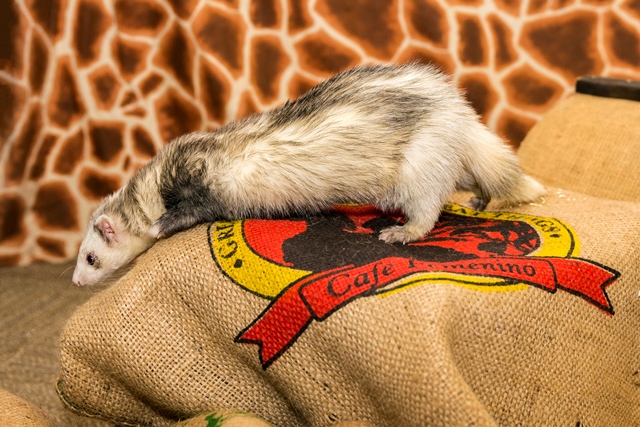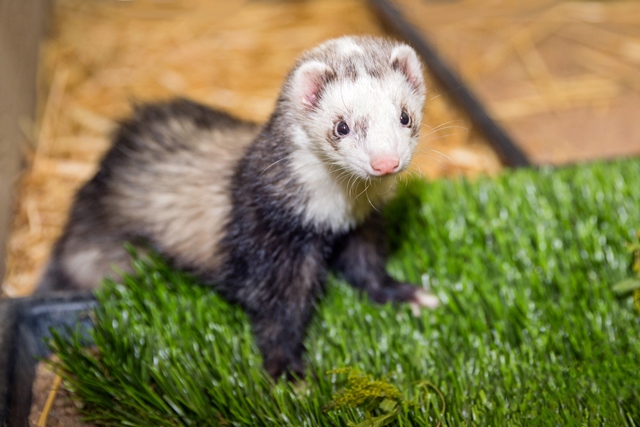Animal Ambassadors Helping to Educate the Community
Originally thought to be globally extinct, the Black-footed ferret is one of the most endangered mammals in North America. Today, the International Union for Conservation of Nature (IUCN), estimates there are approximately 300 Black-footed ferrets living in the grasslands of South Dakota, Wyoming, Wisconsin, and some parts of Northern Arizona.
Although we don’t have a Black-footed ferret here at Reid Park Zoo, our two domestic ferrets Dmitri and Nadia, are helping educate the public about their endangered counterparts.

“The domestic ferret is related to the native Black-footed ferret, which is an extremely endangered animal,” said Katie Hutchinson, a Zoo Keeper at Reid Park Zoo. According to Hutchinson, one of the ways that Black-footed ferrets help contribute to the ecosystem is through population control.
“Their [Black-footed ferrets] primary diet includes prairie dogs. Prairie dogs reproduce very quickly and they have lots of tunnels that can destroy native habitat,” said Hutchinson.

Habitats that are destroyed by prairie dogs can pose a hazard to grazing cattle – leading to the extermination of prairie dogs by farmers. Unfortunately, the extermination methods used, often kill Black-footed ferrets as well.
Another threat Black-footed ferrets face is the Sylvatic Plague, a bacterial disease that is transmitted by fleas. According to the United States Geological Survey (USGS), the disease was inadvertently introduced in the early 1900’s. Today, it is one of the primary concerns for biologists trying to protect the species.
While there are vaccines to combat the disease, costs are often expensive and the task of immunizing wild ferrets via injection is difficult. Because of this, scientists have created a type of vaccine-oral-bait, which is easier to distribute. You can read more about that here.
At Reid Park Zoo, the ferrets are part of the animal ambassador collection, which aims to help educate the public by allowing visitors to get up close and personal with the animals. By doing so, staff members hope to raise awareness of the struggles that Black-footed ferrets are facing in the wild.
One of the ways that you can help protect these animals is by being conscious of what you are putting in the environment – especially when it comes to rodenticide and poisons. By finding alternatives to releasing toxic chemicals into the ecosystem, you can help a wide variety of species.
